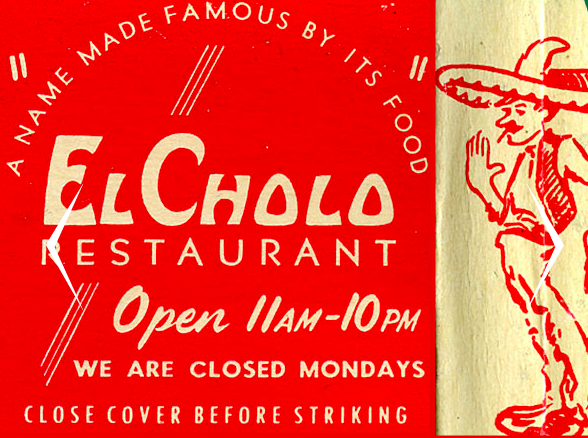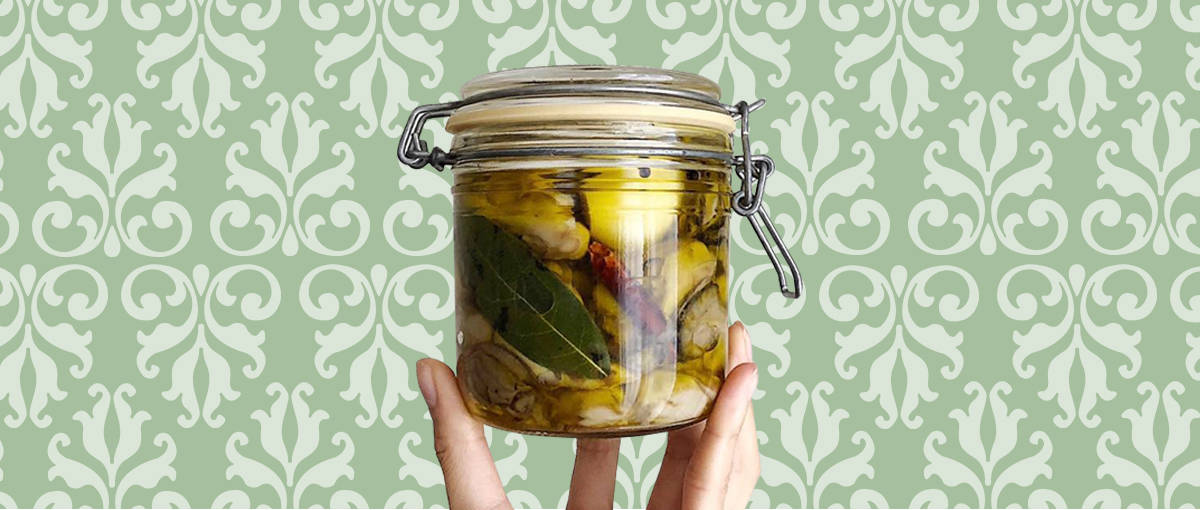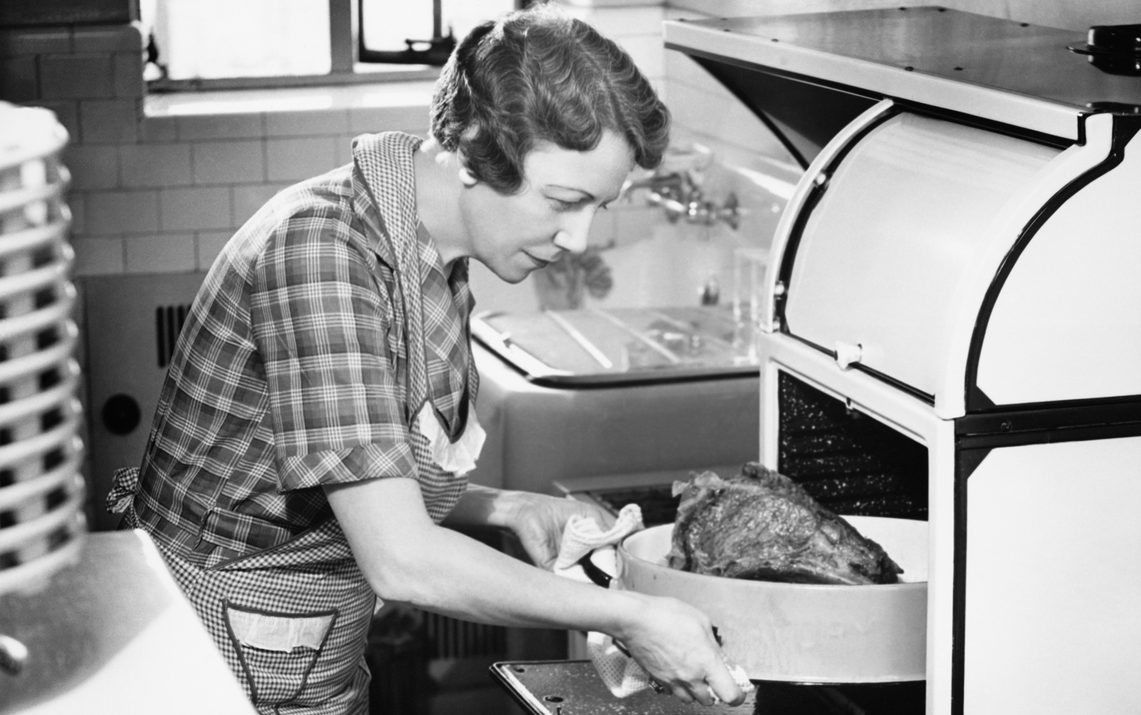When it comes to popular foods, it’s common to associate our personal favorites with positive, feel-good emotions. Graham crackers, for example, remind most people of enjoying s’mores and scary stories by the campfire. There’s also Chinese takeout, which serves as comfort food for many folks in the States.
Yet, it’s not uncommon for popular foods to have dark and twisted pasts.
Some of these foods were created based on motives and beliefs that would make the average modern-day person cringe with horror and confusion. In other cases, seemingly ordinary products like rum and Fanta stem from a complicated history laced with xenophobic fears and racial oppression. These particular stories are prime examples of how prejudiced beliefs can impact every aspect of history, right down to the food that we know and love today.
Despite the unfortunate history behind certain foods, we think it’s super important to acknowledge these stories.
It emphasizes how food is the literal result of people’s beliefs and actions. And, at the very least, these stories help us recognize the evolution of the food industry. Think about it: We live in a world where things like “donugs” and taco pizza now exist. (Has it changed for better or for worse? Well, that’s up for debate.)
If you’re fascinated by food history, read on to learn about the dark origins of 11 popular foods.
1. Kellogg’s Cereal
As one of the country’s most famous cereals, Kellogg’s Corn Flakes is known for its timeless red logo and iconic crispy texture. It’s the epitome of a classic American breakfast! But back in the 1800s, Kellogg’s Corn Flakes was known for something completely different.
Dr. John Kellogg, the cereal’s inventor, created Kellogg’s Corn Flakes to dull his patients’ sexual appetites.
In the 1800s, people believed sexual arousal — including sexual intercourse and masturbation — was evil. They also believed that eating bland, plain food would suppress sexual urges and keep people on the path of spiritual purity. Fatty and flavorful food, on the other hand, apparently encouraged those desires. Well then…
2. Graham Crackers
When you think of graham crackers, cheesecakes or s’mores probably come to mind. But if your name was Sylvester Graham and you lived in the 1800s, your intentions had nothing to do with dessert.
Like Kellogg’s Corn Flakes, Graham crackers were created to quell sexual desires.
Graham, a Presbyterian minister, believed recreational sex (along with materialism and gluttony) were the cause of physical illness. He also really hated white flour, which he saw as unfit for a healthy diet. In this regard, the guy wasn’t wrong; white flour is nutritionally inferior to whole wheat flour.
Consequently, Graham figured out how to make whole wheat flour, which he used to make Graham bread.
These days, we now call it “Graham crackers,” and it’s all thanks to Graham’s obsession with suppressing sexual desire by way of bland food.
3. Taco Bell
While Taco Bell isn’t associated with authentic Mexican food, the restaurant chain’s original recipes were based off of traditional cuisine. They hail from Mitla Cafe, a restaurant in San Bernardino, California that’s been around for 80 years.
The only catch? Taco Bell was created by Glenn Bell, a restaurant owner who used Mitla Cafe’s recipes in his own establishment.
Bell was a regular customer at Mitla Cafe. He also sold burgers and hot dogs across the street. Eventually, he befriended the owners, Lucia and Salvador Rodriguez. After Bell learned how to make their simple yet delicious tacos, he started to make and sell them to the masses.
Taco Bell was born in 1962. By 1964, Bell began franchising his restaurant.
While Mitla Cafe was left out of the picture, the Rodriguez family never took legal action or felt any animosity toward Bell.
4. PEZ
You don’t need to be a candy lover or toy collector to know about PEZ. From Hello Kitty to Snoopy, the popular candy dispenser has been made with every cartoon character under the sun. It also likely reminds you (and your parents!) of childhood.
But according to MIT, PEZ was once marketed for cigarette-smoking adults.
In the 1920s, an Austrian confectioner named Eduard Haas III created small peppermint candies. He named them PEZ, which came from “Ppferrerminze,” or “peppermint” in German. Haas eventually began marketing his candy to people who were trying to quit smoking. He figured that, instead of smoking cigarettes, folks could occupy themselves and eat mints instead.
In 1947, Haas created a PEZ dispenser that looked like a cigarette lighter.
PEZ also used sexy “PEZ girls” in their marketing campaigns. However, in 1952, PEZ began selling their product in the United States. The only problem? PEZ was most popular with American kids, so they obviously had to change their advertising tactics. So, the company decided to add characters to their dispensers — and the rest is history.
5. Rum
When it comes to booze, you can’t beat a classic rum cocktail like a dark ‘n stormy. And while the popular alcohol is often associated with pirates and tropical getaways, rum has a pretty dark history.
Rum is made of fermented and distilled molasses, which has its roots in slavery.
According to an article on Food & Wine, slaves were the backbone of the sugarcane industry. They were the ones who planted, harvested, and refined the sugarcane. The refinement process produced a by-product called molasses.
In the 17th century, slaves on sugarcane plantations in the Caribbean figured out how to ferment the molasses to make alcohol. Once distilled, the fermented molasses became rum.
6. Creole Food
Creole food is often thought to be a cross between Southern and French cuisine. After all, the world “Creole” is used to describe “people who were born to settlers in French colonial Louisiana,” according to Oxford American.
Yet, creole food is significantly influenced by African cuisine, as the slaves did a majority of the cooking for upper class families in Louisiana.
In other words, Creole food is extremely diverse, and it doesn’t stop at the Southern and French elements. The food is influenced by a wide variety of cuisines, including Native American, Caribbean, Spanish, Italian, and Portuguese food.
7. Chinese-American Food
Chinese-American food is a staple in the United States. From takeout joints to sit-down buffets, Chinese restaurants are super easy to find. But have you ever wondered why there are so many? As it turns out, it doesn’t have to do with the popularity of the food.
The prevalence of Chinese-American restaurants stems from racist immigration laws.
White Americans were concerned that Chinese workers would take their job opportunities. This lead to the Chinese Exclusion Act of 1882, which prevented all Chinese workers from entering the States. However, business owners — including restaurant owners — were allowed in the country with a special visa.
This led to an influx of Chinese restaurants, as owners could bring employees from China.
A segment on Splinter News shares that the number of Chinese restaurants in the States doubled from 1910 to 1920. This number continued to grow over the next few decades. The food was also made sweeter to appeal to non-Chinese diners, according to an article in Oxford Research Encyclopedias. By the 1980s, Chinese-American food was the most popular cuisine in the country.
8. Green Food on St. Patrick’s Day
On St. Patrick’s Day, it’s customary for Americans to enjoy foods like green cupcakes and even greener beer. And when you consider the link between green and Ireland, it’s easy to see why. Ireland is not only known as the Emerald Isle, but you can find green on the Irish flag as well.
But according to Irish folk memory, it’s said that people were so hungry during the famine that they ate grass, which turned their mouths green.
Christine Kinealy, historian and founding director of Ireland’s Great Hunger Institute, told NPR that she finds it “jolting” to see green-dyed food. “For Irish-Americans, they think of dyeing food green, they think everything is happy. But really, in terms of the famine, this is very sad imagery,” she said.
9. 7-Up
Do you like Bib-Label Lithiated Lemon-Lime Soda? …Wait, let’s try that again. Do you like 7-Up? If you answered “yes,” you might be surprised to learn that the popular soft drink began as a completely different beverage.
According to McGill University, the original 1929 formula had lithium citrate, a medication used to treat mental disorders such as mania.
It’s categorized as a mood stabilizer. And while there obviously isn’t anything weird about the actual drug, it is strange to think of it in a popular carbonated soft drink.
Eventually, the product’s name was changed to 7 Up Lithiated Lemon Soda, which then became 7-Up (minus the lithium citrate).
10. Coca-Cola
In the 1860s, a licensed chemist named Dr. John Stith Pemberton was injured during a battle in the Civil War. He used morphine for the pain, but like most wounded soldiers of the time, he eventually became addicted.
Pemberton, who lived in Georgia, set out to invent a tonic that would alleviate the pain and squash his addiction.
That’s how he created “Pemberton’s French Coca Wine,” which was made of alcohol and coca, the plant that naturally contains cocaine. It was also marketed as “a most wonderful invigorator of sexual organs.” But in the late 1880s, alcohol became illegal in his county, meaning his drink was illegal too.
Pemberton swapped out the wine and used sugar syrup, allowing him to continue to sell the cocaine-laced drink. He called it Coca-Cola.
But the dark history of Coca-Cola doesn’t end there. Up until this point, black people couldn’t drink from the racially segregated soda fountains. But when Pemberton began to sell Coca-Cola in bottles in 1899, anyone could enjoy the beverage. This worried middle-class whites, who believed soft drinks were perpetuating cocaine use among the black community.
The concern was so intense that Coca-Cola caved and removed cocaine from the drink in 1903.
11. Fanta
When you consider the success of Coca-Cola, it’s not surprising that the company created Fanta. But beyond the catchy jingles and tropical island dancing, the soft drink has an exceptionally dark past.
Not only was Fanta invented during World War II in Nazi Germany, but it became the signature drink of the Nazi party.
Here’s how it happened: The American-based Coca-Cola company supported Coca-Cola GmbH, their German subsidiary, in honoring the Nazi agenda. For example, according to Atlas Obscura, Coca-Cola sponsored the Berlin Olympics in 1936, where the company had “banners featuring the Coca-Cola logo alongside the swatstika.”
But after Japan bombed Pearl Harbor in 1941, America joined World War II. This meant Coca-Cola had to stop supplying syrup to Coca-Cola GmbH.
The CEO of Coca-Cola GmbH, Max Keith, decided to experiment and create a new drink. However, wartime rationing only allowed so many ingredients. Keith ended up using leftovers from other manufacturers, like whey (a dairy by-product) and remnants from cider presses. The result? Fanta.
Do you now think of your fave snacks a little differently? You don’t have to — most of them have corrected their wrongs and learned from their history.








